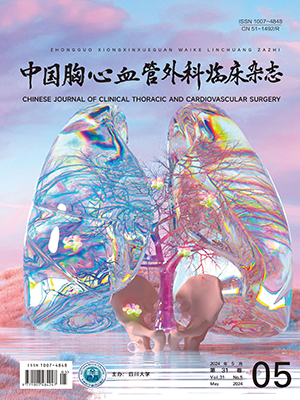| 1. |
Rodrigo R, Prieto JC, Castillo R. Cardioprotection against ischemia/reperfusion by vitamins C and E plus n-3 fatty acids: molecular mechanisms and potential clinical applications. Clin Sci (Lond), 2013, 124(1): 1-15.
|
| 2. |
Deng C, Sun Z, Tong G, et al. Alpha-Lipoic acid reduces infarct size and preserves cardiac function in rat myocardial ischemia/reperfusion injury through activation of PI3K/Akt/Nrf2 pathway. PLoS One, 2013, 8(3): 571-583.
|
| 3. |
De Vries DK, Kortekaas KA, Tsikas D, et al. Oxidative damage in clinical ischemia/reperfusion injury: a reappraisal. Antioxid Redox Signal, 2013, 19(6): 535-545.
|
| 4. |
Filep JG. Glucocorticoid protection against myocardial ischemia-reperfusion injury: central role for the PGD2-Nrf2 pathway. Hyper-tension, 2014, 63(1): 22-23.
|
| 5. |
Katsumata Y, Shinmura K, Sugiura Y, et al. Endogenous prostag-landin D2 and its metabolites protect the heart against ischemia-reperfusion injury by activating Nrf2. Hypertension, 2014, 63(1): 80-87.
|
| 6. |
Tang X, Liu J, Dong W, et al. The cardioprotective effects of citric Acid and L-malic Acid on myocardial ischemia/reperfusion injury. Evid Based Complement Alternat Med, 2013, 32(2): 220-231.
|
| 7. |
Meili-Butz S, Niermann T, Fasler-Kan E, et al. Dimethyl fumarate, a small molecule drug for psoriasis, inhibits Nuclear Factor-kappaB and reduces myocardialinfarct size in rats. Eur J Pharmacol, 2008, 586(1-3): 251-258.
|
| 8. |
Campos F, Sobrino T, Ramos-Cabrer P, et al. Oxaloacetate: a novel neuroprotective for acute ischemic stroke. Int J Biochem Cell Biol, 2012, 44(2): 262-265.
|
| 9. |
Gurusamy N, Goswami S, Malik G, et al. Oxidative injury induces selective rather than global inhibition of proteasomal activity. J Mol Cell Cardiol, 2008, 44(2): 419-428.
|
| 10. |
Braunersreuther V, Jaquet V. Reactive oxygen species in myocardial reperfusion injury from physiopathology to therapeutic approa-ches. Curr Pharm Biotechnol, 2012, 13(1): 97-114.
|
| 11. |
Wang XY, Dong WP, Bi SH, et al. Protective effects of osthole against myocardial ischemia/reperfusion injury in rats. Int J Mol Med, 2013, 32(2): 365-372.
|
| 12. |
Matysiak R, Błaszczyk J, Obrebska A, et al. Oxidative-reductive balance in patients after acute coronary syndrome that undergo cardiac rehabilitation. Pol Merkur Lekarski, 2014, 37(219): 148-152.
|
| 13. |
Sykiotis GP,Bohmann D. Stress-activated cap'n'collar transcription factors in aging and human disease. Sci Signal, 2010, 3(112):104-110.
|
| 14. |
Hayes JD, Dinkova-Kostova AT. The Nrf2 regulatory network provides an interface between redox and intermediary metabolism. Trends Biochem Sci, 2014, 39(4): 199-218.
|
| 15. |
Li Z, Galli U, Becker LE, et al. Sulforaphane protects hearts from early injury after experimental transplantation. Ann Transplant, 2013, 18(5): 58-66.
|
| 16. |
Calvert JW, Jha S, Gundewar S, et al. Hydrogen sulfide mediates cardioprotection through Nrf2 signaling. Circ Res, 2009, 105(4): 365-374.
|
| 17. |
Cui G, Chui WL, Li RA, et al. Cytoprotection of Baicalein Against Oxidative Stress-induced Cardiomyocytes Injury Through the Nrf2/Keap1 Pathway. J Cardiovasc Pharmacol, 2015, 65(1): 39-46.
|
| 18. |
Ashrafian H, Czibik G, Bellahcene M, et al. Fumarate is cardiopro-tective via activation of the Nrf2 antioxidant pathway. Cell Metab, 2012, 15(3): 361-371.
|
| 19. |
Hayes JD, McMahon M. NRF2 and KEAP1 mutations: permanent activation of an adaptive response in cancer. Trends Biochem Sci, 2009, 34(4): 176-188.
|
| 20. |
Motohashi H, Yamamoto M. Nrf2-Keap1 defines a physiologically important stress response mechanism. Trends Mol Med, 2004, 10(11): 549-557.
|




